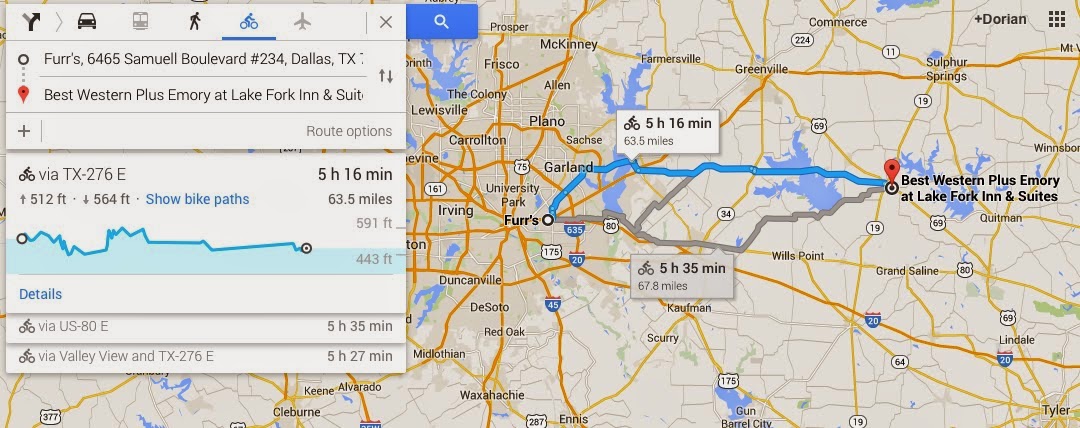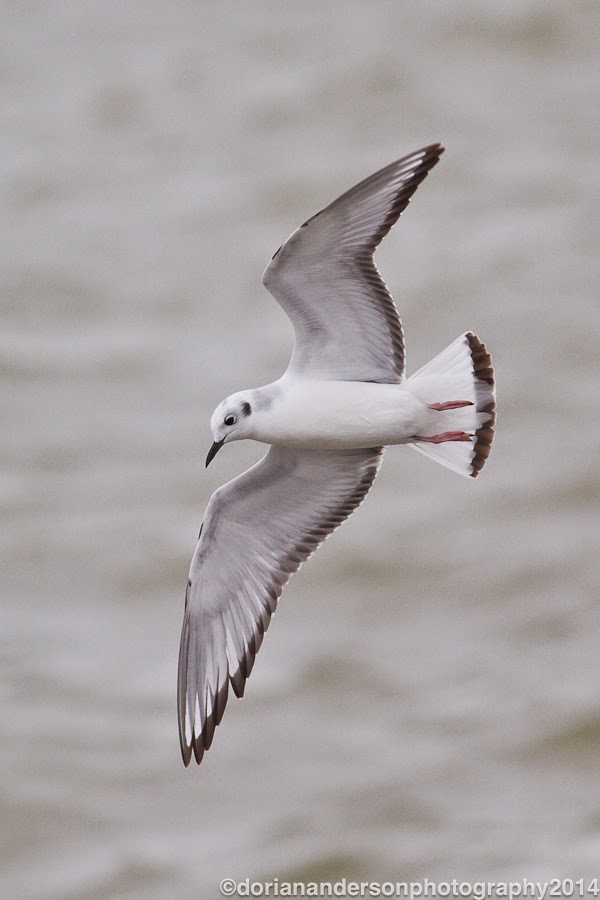The first value that is worth calculating is simple the average number of miles I rode each day. That number is 48.85 miles/day (17,830 miles / 365 days). I present how I calculated this number not as I doubt that reader how to calculate averages, but to show that I am counting all 365 days of the year in the average number. Traveling cyclists often count the average number of miles over a trip using the days riden rather than the total days. This method artificially inflates the daily average. Off days are days, and they permit the rider to recover and ride more miles on the days surrounding them. A year is 365 days, and 365 days should be used to calculate the average number of miles per day. 48.85 miles per day may not seem like that much until you remember that I also spent many hours birding. If all I did was ride, my daily average would be much higher. It is also worth noting that riding may more miles might not actually raise the species total that much. At many points this year is was well-worth slowing down to allow birds to come to me. Sure I could have raced through California in the fall, but then what? I just don't think that riding 70 miles per day is really going to net anyone significantly more species than what I tallied this year. It's better to be thorough and make sure you didn't miss any birds in the areas that you do reach.
OK, now we can delve a bit deeper into some of the numbers. This first graph shows the average number of miles I rode during each month of the year. Again, every day is represented, even those days when I did not ride any miles.
There are several things worth pointing out from this graph. It is clear that January was, by a wide margin, my lowest riding month. Recall that this winter in the northeast was the worst one in the last 100 years from snow and temperature standpoints. I was snowed out on several occasions, and this dragged down the overall average for the month. These down days were not necessarily a bad thing though as they helped keep my miles down during the early part of the year. This was actually by design as I thought that burnout/fatigue/injury could be a major problem later in the year. That I made it through the year without getting injured and that I only really burned out as the list of possible birds was finally exhausted speaks to the wisdom of this strategy. The terrain the first few months while I was on the east coast and the Gulf Coast was very flat; Even though the miles increased in subsequent months, there still weren't any significant hills. The first of those came when I arrived in Colorado in June. You can also see that I rode significantly more miles in the second half of the year (9,909) than I did in the first half (7,921). Those miles in the second half were much tougher since many of them included large elevation changes. Again, that I was able to continue to build miles through the middle part of the year speaks to my control of my fitness level and program.
OK, here is another way of looking at my rides from the entire year. This time I have binned or grouped them based on their distances.
Most of the rides cluster around 30-70 miles. This is not surprising given that the daily average was ~50. I rode at least 70 miles on 86 days, and I rode at least 100 on 14 different occasions. These 14 occasions were:
March 8 - 111 miles - Crossing South Florida on the Tamiami trail
March 12 - 102 miles - 102 miler capped with visit to Hooters!
April 27 - 112 miles - Big miles out of High Island on SE winds
August 7 - 121 miles - Longest ride of year in Southern Idaho
August 11 - 118 miles - Hot day and lots of climbing in Northeastern Oregon
September 1 - 108 miles - The race to Tufted puffin
October 14 - 101 miles - Riding into LA and finding Spotted dove
October 17 - 103 miles - Yellow-green vireo
October 27 - 111 miles - Rufous-backed robin, day 1
October 28 - 114 miles - Rufous-backed robin, day 2
November 15 - 119 miles - East ones with tailwinds
November 16 - 110 miles - One of if not the worst ride of year in TX with freezing north winds
December 13 - 107 miles - King Ranch traverse
December 25 - 112 miles - not even bike troubles can stop me
Man, writing this post is the most fun I have had all year! It is so much fun to return to these older posts and see what I was doing on those longest days. OK, since I cannot go on forever, I will present just one more graph in this installment. This graph shows the accumulation of species over the course of the year.
The X-axis is "days". For simplicity, I assumed each month was 30 days. Hence there are 12 values across the X-axis. The red line is the actual data, day-by-day. The black line is a line of best fit or regression that describes the data using a polynomial function. Don't worry too much about it, it's just another way of representing the data. Clearly, the overall rate of species additional is going to drop over the course of the year. While there are certainly going to be pockets of new species here and there, proportionately fewer common/widespread birds will be found later in the year. For example, you can see a big jump around day 135. That represents my arrival to Arizona and the Chiricahuas which occurred on May 15. My arrival in the Lower Rio Grande Valley can bee seen around the end of November and the beginning of December at ~Day 331. The most important thing, and this is true of any North American big year, is to notice how diminishing the bird returns are towards the end of the year. For example, I added 490 species in the the first 6 months and 127 in the next 6! This, coupled with the increased riding in the back half of the year, shows how much harder I had to work per bird in the later portion of the year. The black repression line goes almost flat by the end of the year; adding birds at this time of year is exponentially more difficult that at any other time.
OK, that's juts a bit of the fun coming in the next few days. I am having almost more fun recapping the year than executing it.














































